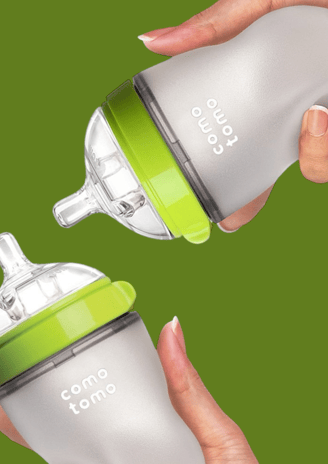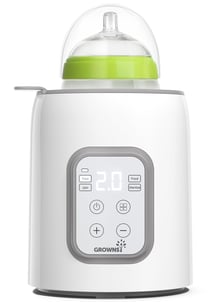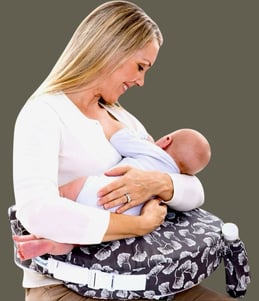Feeding Development in Children: Key Tips & Strategies
Discover essential tips for feeding development in children, from breastfeeding and bottle feeding to self-feeding and establishing a consistent mealtime routine. Learn how to enhance your child's growth with expert-recommended products and strategies that support their developmental milestones.
EXPERT INSIGHTS
12/11/20246 min read


Feeding Development in Children: Stages, Tips, and Expert-Recommended Products
Feeding development is a vital aspect of a child’s growth. From breastfeeding to self-feeding with utensils, each stage presents new challenges and opportunities for learning. Using expert-recommended products and techniques can make the process easier, safer, and more enjoyable for both parents and children. This guide provides a comprehensive overview of feeding stages, practical tips, and trusted product recommendations to support your child's journey.
1. Newborn Stage: Mastering Suck and Swallow
Overview: Newborns rely on breast milk or formula for nutrition. Their feeding is guided by natural reflexes like sucking and swallowing. This stage is crucial as it lays the foundation for all future feeding development.
Tips for Parents:
Breastfeeding: Prioritize a proper latch and consider consulting a lactation expert for challenges. A good latch ensures that your baby is getting enough milk and can help prevent discomfort for you.
Bottle Feeding: Choose bottles that minimize nipple confusion and reduce colic symptoms. Look for ones with anti-colic features to make feeding more comfortable for your baby.
Expert-Approved Products:
Nursing Pillow: The My Brest Friend Original Nursing Pillow offers unmatched support and helps maintain proper posture during feeding. This pillow is designed to provide both comfort and stability, making breastfeeding easier and more enjoyable.
Anti-Colic Bottles: Comotomo Baby Bottles mimic breastfeeding and are highly rated for their wide nipple base and anti-colic vents. These bottles are soft and squeezable, making them comfortable for babies and easy to clean.
Bottle Warmer: GROWNSY 8-in-1 Fast Baby Milk Warmer with Timer for Breastmilk or Formula, Accurate Temperature Control, with Defrost, Sterilizing, Keep Warm, and Heat Baby Food Jars Function.
2. Infant Stage (4-6 Months): Exploring Solids
Overview: At around 4-6 months, many babies are ready for their first taste of solid food. This is an exciting stage where they begin exploring new flavors and textures, setting the stage for healthy eating habits.
Tips for Parents:
Look for Readiness Signs: Such as sitting up with support and showing interest in food. Your baby may also show a diminished tongue-thrust reflex and the ability to move food to the back of the mouth.
Start with Simple Foods: Single-grain cereals or pureed fruits and vegetables. Introduce one food at a time to monitor for allergies and gauge your baby's preferences.
Parent-Approved Products:
High Chair: The Stokke Tripp Trapp High Chair grows with your child, providing a comfortable and ergonomic feeding position. Its adjustability and timeless design make it a great example of universal design.
Baby Food Maker: The BEABA Babycook Solo simplifies making fresh purees at home with a one-handed operation and compact design, perfect for small spaces. This versatile appliance steams, blends, reheats, and defrosts food.
Mess Control: Mushie Silicone Baby Bibs are soft, waterproof, and come with a deep spill pocket to catch spills. Their lightweight design and adjustable fit ensure comfort for all babies while keeping mealtime messes under control.
3. Early Toddler Stage (6-12 Months): Exploring Finger Foods
Overview: During this stage, babies develop the pincer grasp and begin self-feeding, exploring new textures and flavors. This stage is important for developing fine motor skills and independence.
Tips for Parents:
Provide Soft Finger Foods: Like avocado slices, steamed carrots, and scrambled eggs. These foods are easy for babies to pick up and chew, encouraging self-feeding.
Encourage Self-Feeding: To build motor skills and hand-eye coordination. Allow your baby to explore food with their hands, even if it gets messy.
Expert-Approved Products:
Training Cups: The NUK Learner Cup is a spill-proof transition cup with ergonomic handles perfect for small hands. This cup helps babies learn to drink independently while minimizing spills.
Utensils: The Ezpz Tiny Spoon is designed to support self-feeding with its soft silicone structure and small size. This utensil is gentle on gums and easy for little hands to grasp.
Divided Plates: The Bumkins Silicone Grip Dish is durable, suction-based, and divided for portioning. It sticks to the table, reducing the likelihood of spills and making mealtime easier.
4. Toddler Stage (12-18 Months): Mastering Utensils
Overview: Toddlers start using utensils more confidently, developing independence during meals. This stage is all about refining motor skills and encouraging self-sufficiency.
Tips for Parents:
Be Patient with Utensil Use: Let your child practice at their own pace. It takes time to master the coordination needed to use utensils effectively.
Introduce Chewable Whole Foods: Like pasta, chicken, and steamed veggies in bite-sized pieces. These foods are great for practicing chewing and self-feeding.
Expert-Approved Products:
Portable High Chair: The Inglesina Fast Table Chair securely attaches to tables for convenience at home or on the go. This high chair is portable, easy to attach, and provides a sturdy and comfortable seating option for toddlers.
Silverware: Grabease All-In-One Utensils are expertly designed to encourage proper grip and self-feeding. These utensils are ergonomically designed for small hands and help promote independence.
Mess-Free Bibs: The Bumkins Sleeved Bib provides full coverage, ideal for messy eaters. This bib is waterproof, easy to clean, and helps protect your child's clothing from spills and stains.
5. Preschool Stage (2-5 Years): Refining Skills and Social Eating
Overview: Preschoolers refine their coordination and participate more actively in family meals. They may also begin to express strong food preferences, making this a crucial time to reinforce healthy eating habits.
Tips for Parents:
Model Healthy Eating: Set an example by modeling healthy eating habits and table manners. Children learn by watching their parents, so demonstrate a positive attitude towards food.
Involve Your Child: In simple meal preparation tasks to spark interest in food. Letting children help with meal prep can increase their willingness to try new foods.
Expert-Approved Products:
Lunch Box: The PlanetBox Rover Stainless Steel Lunchbox is durable, eco-friendly, and perfect for portion control. This lunchbox has multiple compartments, making it easy to pack a balanced meal.
Utensils: The OXO Tot Fork and Spoon Set is child-sized, easy to grip, and dishwasher-safe. These utensils are designed to help children transition to using adult silverware.
Divided Plates: The Avanchy Bamboo Suction Plate is non-toxic, eco-friendly, and stays put on the table. This plate is divided into sections to help with portion control and reduce messes.
Additional Feeding Tips for All Stages
Encourage Exploration: Let your child play with food—it helps them feel comfortable with new textures. Exploration is a key part of learning to eat and can make the process more enjoyable.
Offer Choices: Present two or three healthy options to give them a sense of control. This can help reduce mealtime battles and encourage children to try new foods.
Be Patient: It can take up to 15 exposures for a child to accept a new food. Persistence and patience are essential in helping children develop healthy eating habits.
Use Positive Reinforcement: Praise their efforts, whether it's trying a new food or mastering a utensil. Positive reinforcement can motivate children to continue improving their eating skills.
Create Consistency: Establish predictable meal and snack routines to foster a sense of security. Consistent routines help children know what to expect and can reduce mealtime stress.
Conclusion
Feeding development is a rewarding journey for both parents and children. Using expert-recommended products and following proven tips can ease transitions and support your child’s milestones. Remember, every child develops at their own pace. With patience, consistency, and high-quality tools, mealtime can transform into a joyful bonding experience. By choosing the best-reviewed and expert-backed products, you ensure a safer, more effective approach to feeding your little one. With these strategies, you can create positive, healthy mealtime experiences that support your child's growth and development.
Expert Recommended
Offers unmatched support and helps maintain proper posture during feeding. This pillow is designed to provide both comfort and stability, making breastfeeding easier and more enjoyable.


Anti-Colic Bottle, mimic breastfeeding and are highly rated for their wide nipple base and anti-colic vents. These bottles are soft and squeezable, making them comfortable for babies and easy to clean.
for Breastmilk or Formula, Accurate Temperature Control, with Defrost, Sterilizing, Keep Warm, and Heat Baby Food Jars Function


InclusiveWorld.Blog
Breaking Barriers, Building Bridges
Contact us:
© 2024. All rights reserved.
Follow us


